Transforming food waste to useful sustainable materials
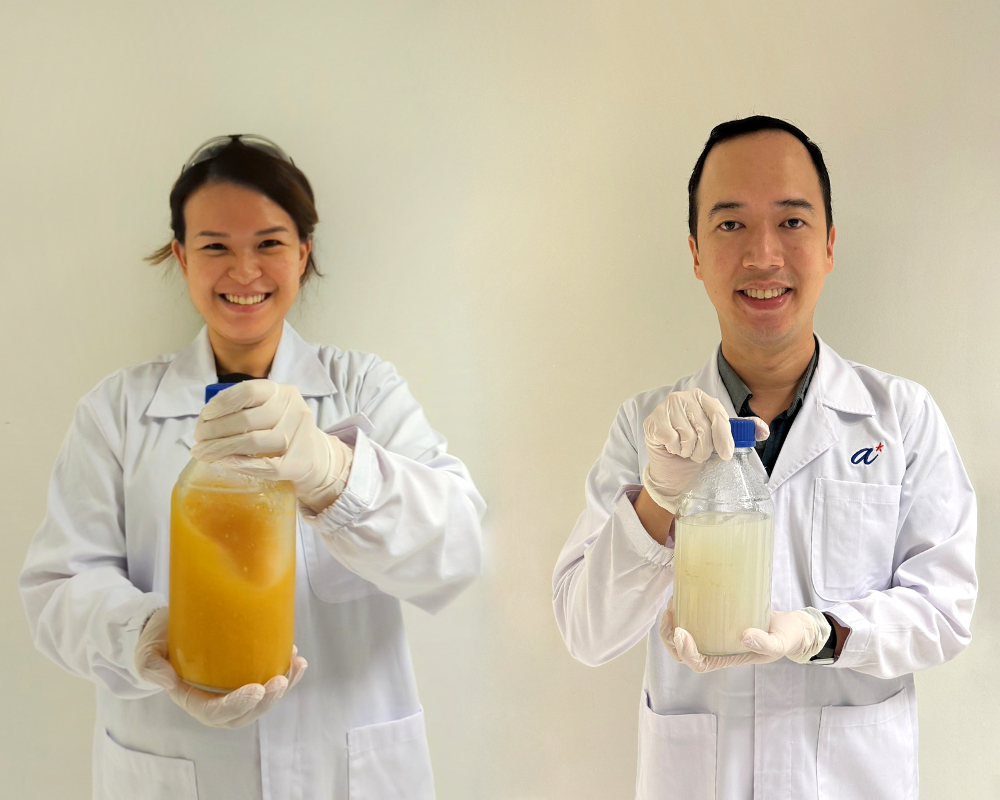 Ms Esther Marie Lin (left) and Dr Teng Choon Peng (right) from IMRE, A*STAR, holding a bottle of pre-processed fruit waste juices and a bottle of bacteria cellulose fibres respectively
Ms Esther Marie Lin (left) and Dr Teng Choon Peng (right) from IMRE, A*STAR, holding a bottle of pre-processed fruit waste juices and a bottle of bacteria cellulose fibres respectively
Singapore generated over 817,000 tonnes of food waste in 2021, however only 19 per cent of it was successfully recycled1 . Based on our current rate of waste generation, Semakau Landfill is expected to be fully filled by 2035.
To support Singapore’s Green Plan 2030, which aims to advance Singapore’s sustainable development, A*STAR’s Institute of Materials Research and Engineering (IMRE) has developed processes which can transform food waste into sustainable composite materials like bioplastics, wood and even leather that are environmentally-friendly and biodegradable.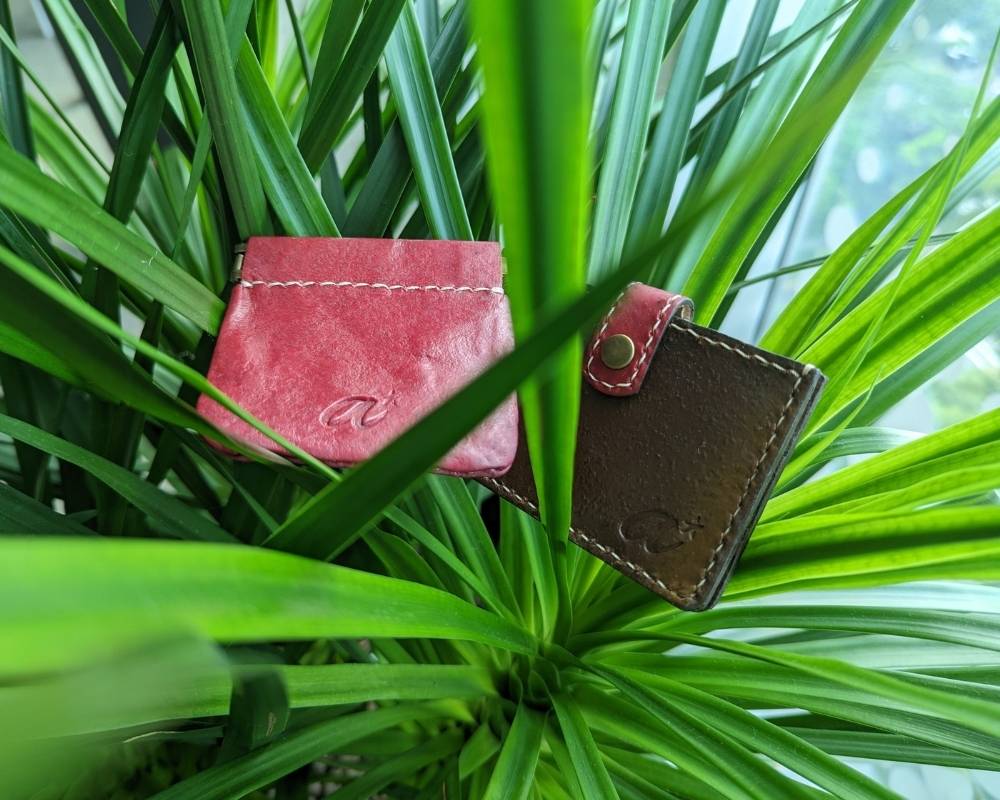
Fruit waste collected is first processed via juice extraction. The fruit juices are then fermented to produce bacteria cellulose. In this process, bacteria cellulose is first processed from a solid mat into loosely dispersed fibres, which are then mixed with a special formulation and subjected to heat treatment at 70°C to form the final sustainable material.
Did You Know?
By designing different formulations to mix with the bacteria cellulose fibres, the team from IMRE can produce different sustainable materials – similar to baking different types of cakes with different recipes!
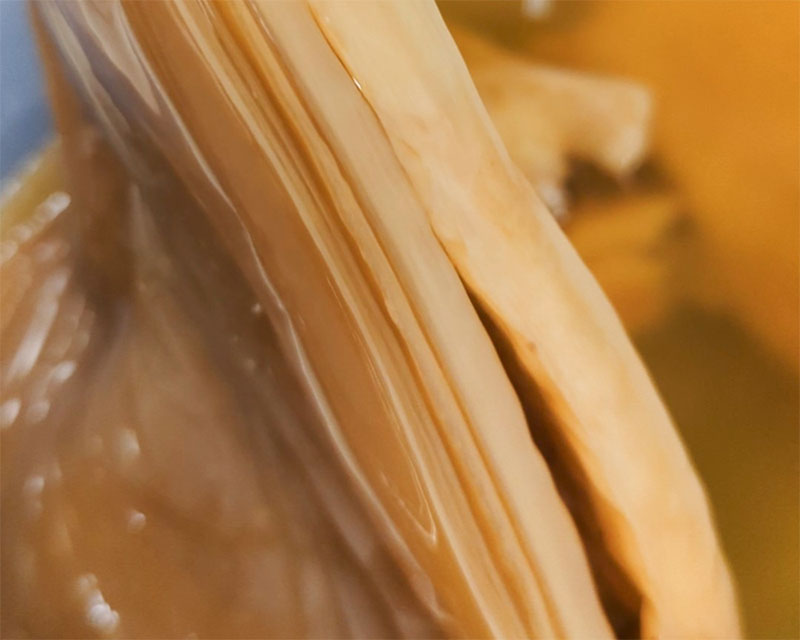
Bacteria cellulose formed after the fermentation of waste fruit juices
By producing materials from food waste instead of using fossil fuels and natural resources, we can cut down on waste and harmful emissions in a move towards achieving a circular economy.
1Source: Nea.gov.sg - Food waste Management
Transforming biomass into a high-value agricultural product
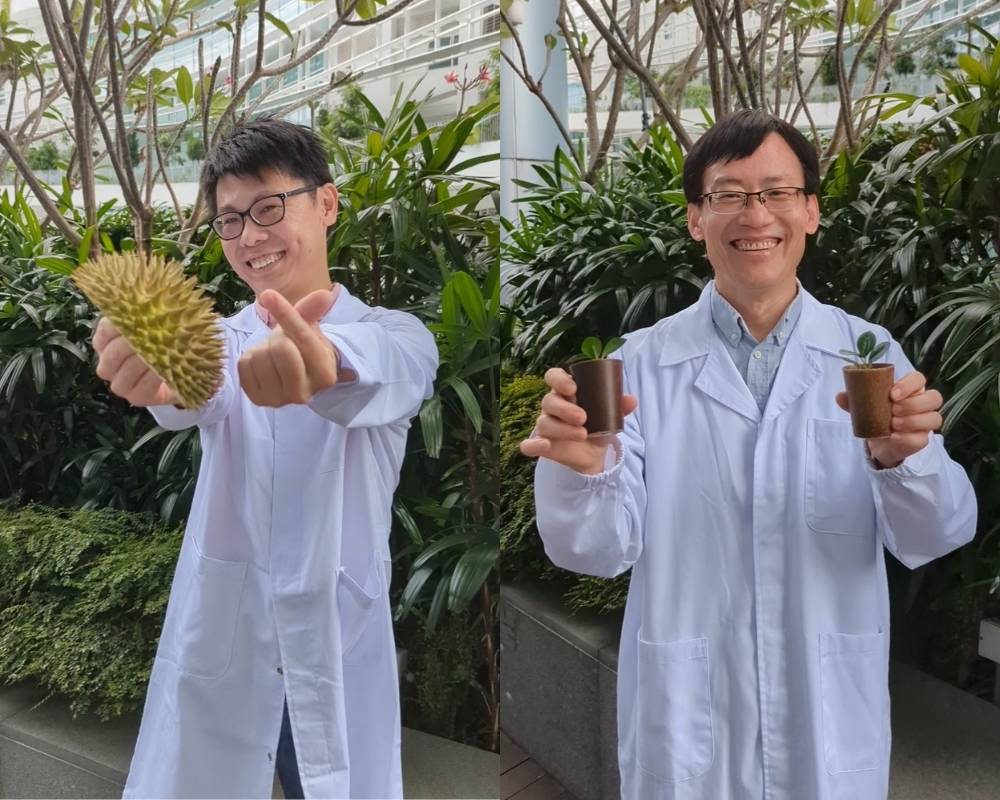 Dr Jayven Yeo (left) and Dr Zhang Xikui (right) from IMRE, A*STAR, holding a pre-processed durian husk and eco-friendly plant pots made from processed durian husks respectively
Dr Jayven Yeo (left) and Dr Zhang Xikui (right) from IMRE, A*STAR, holding a pre-processed durian husk and eco-friendly plant pots made from processed durian husks respectively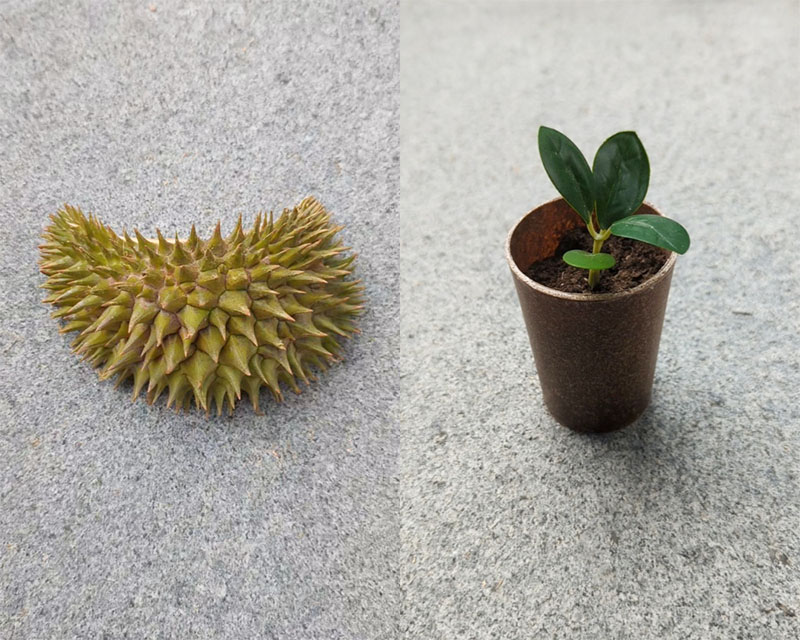
Waste durian husks (left) processed using IMRE’s technology to form eco-friendly plant pots (right)
To combat climate change by reducing waste generation and carbon footprint, and supporting Singapore’s Green Plan 20301 to reduce 30 per cent of waste sent to the landfill by 2030 , there is a pressing need to introduce more sustainable processes to reduce waste generation.
A*STAR’s Institute of Materials Research and Engineering (IMRE) has developed technology to upcycle organic, inedible fruit waste like durian husks into eco-friendly plant pots, turning conventional waste streams into new, sustainable resources.
The eco-friendly plant pots created from durian husks are fully compostable and degradable in soil, leaving no microplastic trace or toxic residues, offering a green alternative to the non-biodegradable plastic that are created using fossil fuels. Seedlings usually have to be removed from conventional plastic pots to be replanted into the soil, causing waste generation as the plastic pots are usually thrown away thereafter and incurring potential transplant shocks to the plants due to the replanting process. However, there is no need to remove or throw away the eco-friendly plant pots as they can be transferred together with the plants and fully biodegrade in the soil after 3-6 months. This makes agricultural processes less tedious with less waste generation, and also prevents transplant shock in plants by avoiding the need for replanting. Beyond benefiting agricultural businesses, the eco-friendly plant pots can also benefit individuals and communities involved in the urban farming movement, which is growing in popularity in Singapore, for a more food-resilient future.
Did You Know?
Inedible husk makes up the bulk (around 60-70 per cent) of each durian, which are usually disposed of and then incinerated at landfills, contributing to around 11,000 tons of food waste annually2 .
1Source: Greenplan.gov.sg - Key targets
2Source: Businesstoday.com.my - Durian projects now closer to Singapore, worlds third largest durian consumer

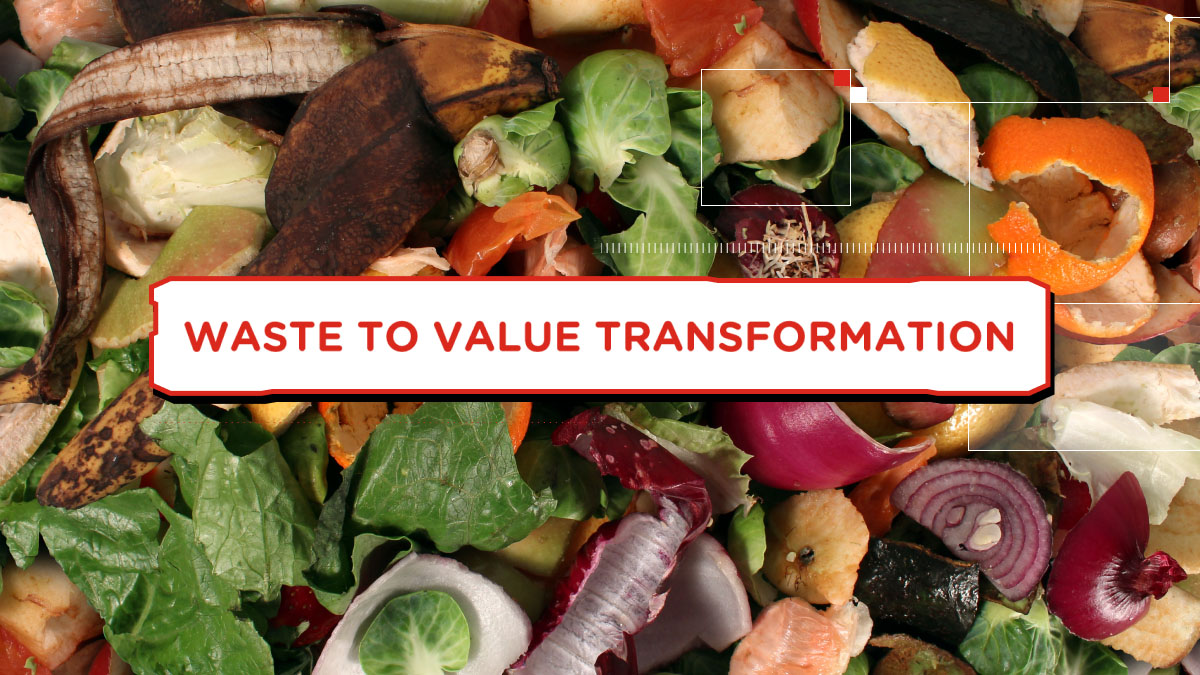
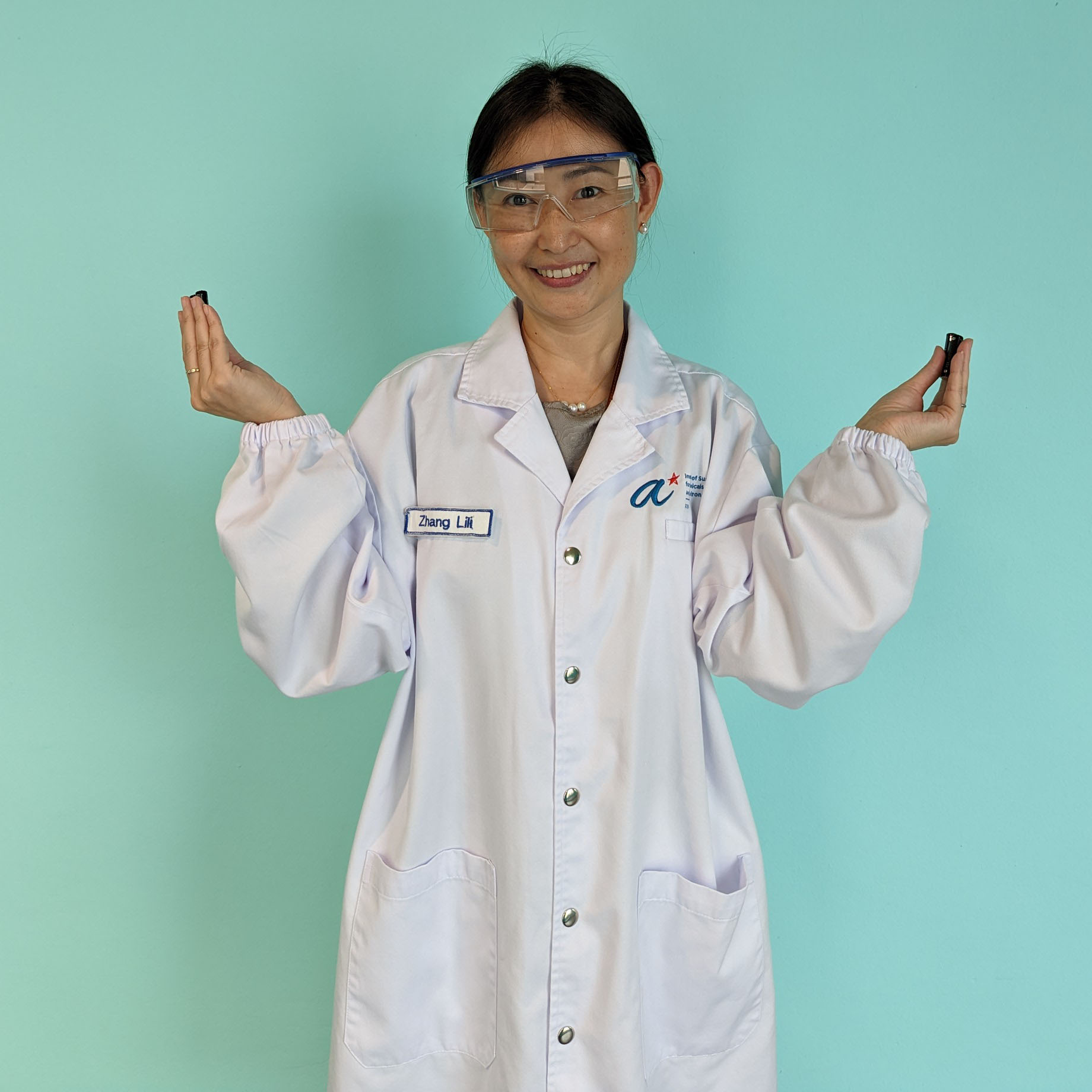
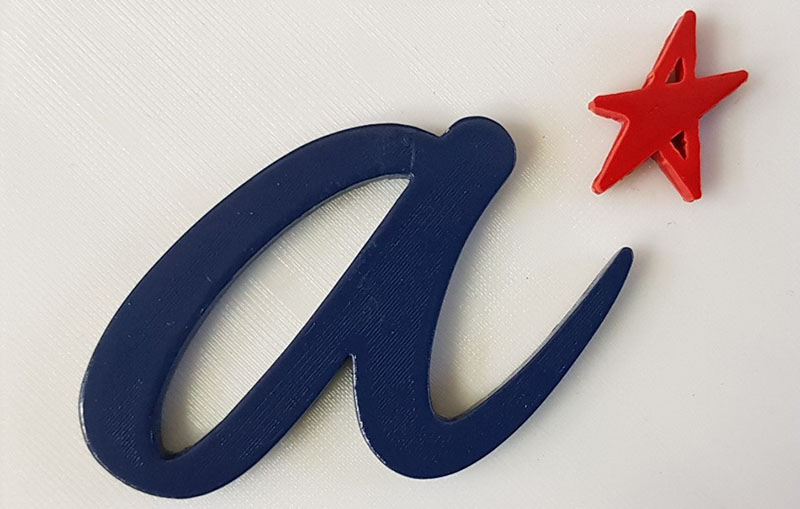
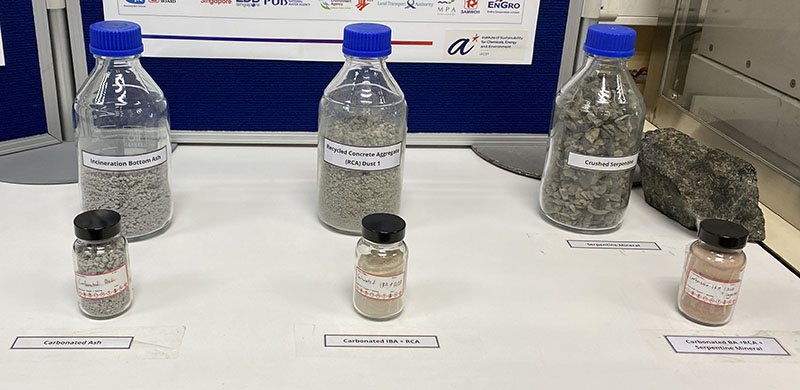
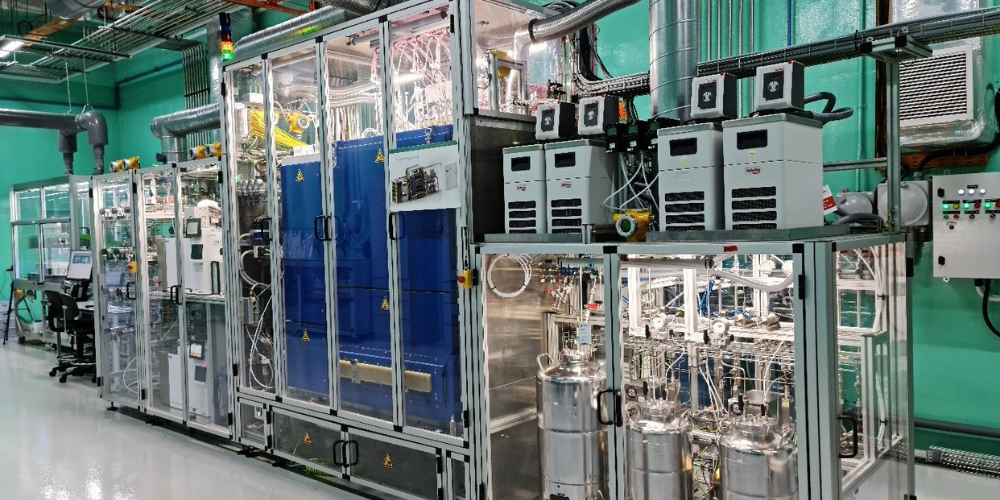 High-throughput facilities at A*STAR’s ISCE2
High-throughput facilities at A*STAR’s ISCE2
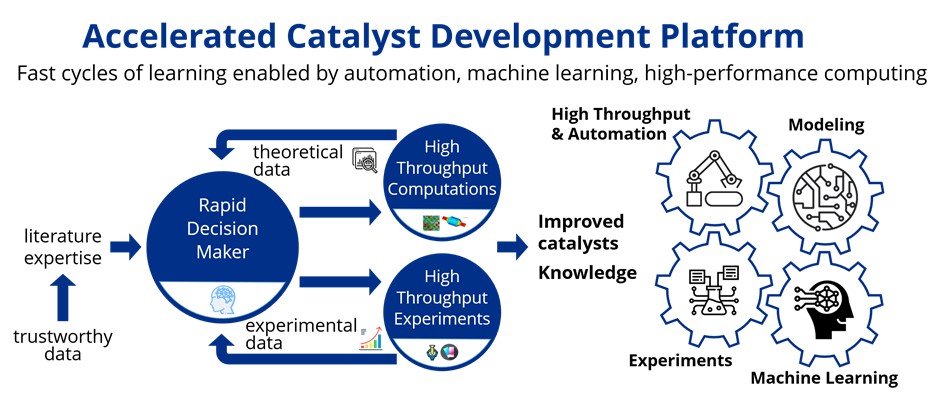 Overview of the Accelerated Catalyst Development Platform (ACDP)
Overview of the Accelerated Catalyst Development Platform (ACDP)
.jpg?sfvrsn=e19525f9_4) A flow electrolyser with electricity supplied through the red, blue and black wires. The transparent tubes carry CO2 and water into the electrolyser, where they react with copper-based catalysts to form valuable products such as ethylene oxide and formic acid.
A flow electrolyser with electricity supplied through the red, blue and black wires. The transparent tubes carry CO2 and water into the electrolyser, where they react with copper-based catalysts to form valuable products such as ethylene oxide and formic acid.
